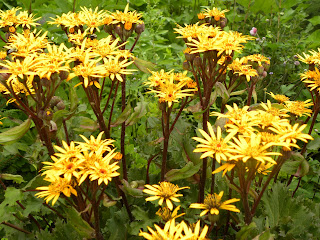In the Nature Garden you will find:
Cornus sericea Flaviramea (Golden Twig or Dogwood) ; Also known as Yellowtwig dogwood, this shrub displays its best twig colour when planted in full-sun and pruned regularly.

In the Nature Garden:
Cotoneaster horizontalis (Rockspray); this semi-evergreen, multi-stemmed shrub has purplish winter foliage and attractive red fruit which covers much of the branches and is held through winter.

In the Show Garden South:
Chamaecyparis pisifera Sungold Show (Japanese false cypress) ; this dwarf golden cultivar of Japanese false cypress has semi-weeping branches. Like many conifers, its colour changes with the seasons, and here shows good winter yellow due to its sunny location.

In the West View Terrace:
Helleborus niger Maximus (Christmas Rose); Hellebores are long-lived, drought and heat tolerant semi-evergreen perennials. In recent years they have most deservedly grown in popularity, thriving in shady gardens . But here at the TBG, a few selections are remarkably suited to the sun. Here H. niger Maximus is poking through in very early winter.
In the Show Garden South:
Crocus speciosus (Autumn Crocus); One of the first of the autumn crocuses to flower, this one has particularly clear bsky blue flowers on bare stems. The leaves are produced in spring.




















































